Bath time can be fun for some kids, but a nightmare for others. The same applies to parents, especially when you realize that your baby swallowed bath water in bathtub. Whether by accident or on purpose, the concern for most parents is, is it a big deal or not?
It certainly is, not just because it includes swallowing an unhealthy amount of water that’s likely to contain dirt, bacteria, and suds, but also for fear of dry drowning and secondary drowning.
Dry drowning is the less serious of the two, but that doesn’t make it any less dangerous. It occurs when the baby manages to inhale a good amount of water which then causes him to have muscle spasms in the esophageal area.
This, more often than not, will lead to choking and blocked airways which requires an emergency response.
Secondary drowning on the other hand takes the danger a step forward. It’s when the inhaled water enters the lungs and starts filling them up with fluid. This is known as pulmonary edema and can be quite deadly, so you’d need to get to the ER right away.
Thankfully, these things are preventable. So read on if you want to find out what you should do when your baby swallows bath water and what you can do to prevent such scenarios in the future.
When To Worry About Baby Swallowing Bath Water
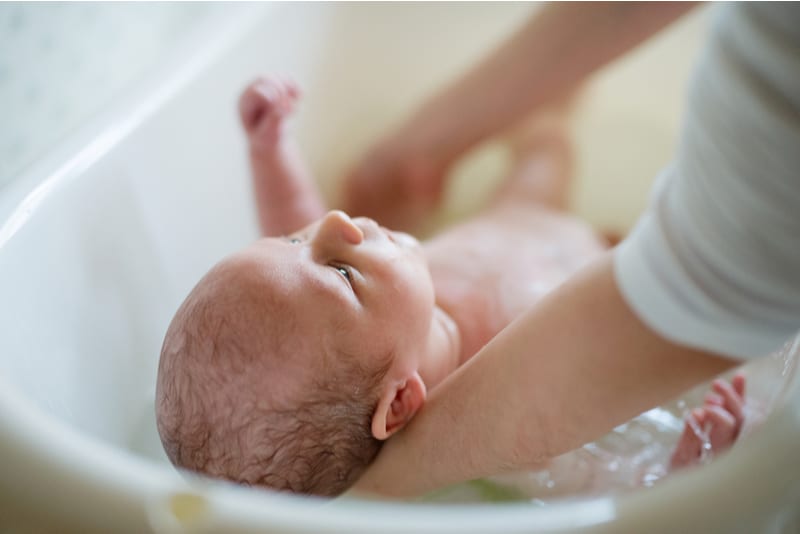
Is any amount of baby-swallowed bath water concerning?
Not exactly. Our kids often accidentally swallow a bit of bathwater every now and then. But if it’s only a little, it shouldn’t really be a problem as all it could cause is a little bit of coughing and wheezing at worst.
It’s a bit more dangerous if you’re using adult shampoo for your child which should already be a no-no anyway. But if you’re using baby shampoos, your baby is very unlikely to get any sort of poisoning from swallowing a little.
Baby shampoos are produced to be safe since the manufacturers know that an accident or two is inevitable, so the worst that could happen is an upset stomach.
What To Do If My Baby Swallowed Bath Water?
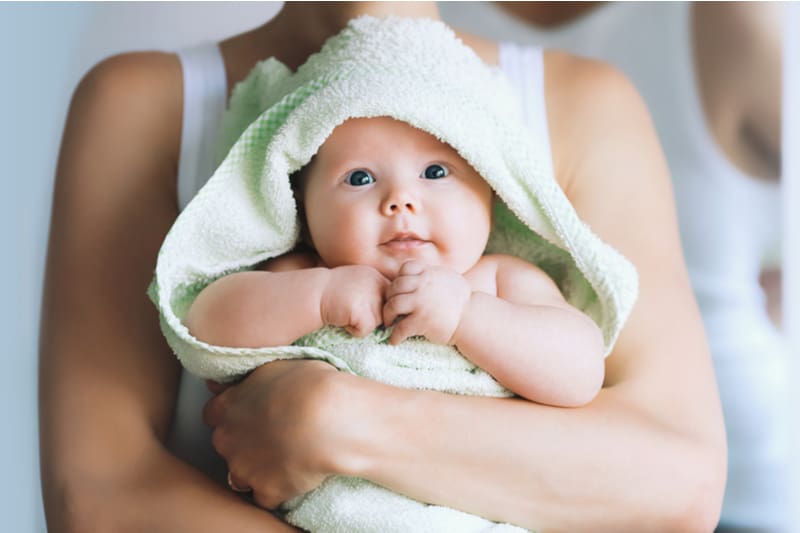
Accidents do happen and if you see that your child is having difficulty breathing or chest pain after swallowing a bit of water, make sure to have the emergency number for the poison control center nearby (1-800-222-1222) so they can come as soon as possible.
This number isn’t just helpful for emergencies related to swallowing large amounts of soapy water, but also in case your child somehow finds his way to the medicine cabinet and ingests medication.
The people on the other side will, much like during a 911 call, be able to tell you what you should do after your baby has swallowed a little water (or a lot of it), and guide you through the necessary steps.
Just make sure to follow their instructions and your baby should be okay.
How To Prevent Your Baby From Swallowing Bath Water
1. Buy a baby bathing cap
- High quality material
- Adjustable size
- The inner ring of the baby shower cap is designed with 2 earmuffs, and the baby shampoo cap can prevent water and foam from entering the babys eyes and ears.
- 3-in-1 baby shower cap, multi-purpose shampoo shower cap, suitable for baby shampoo shield, sunshade, hairdressing assistant, is a good gift for children, let them take a bath more happily.
Prices pulled from the Amazon Product Advertising API on:
Product prices and availability are accurate as of the date/time indicated and are subject to change. Any price and availability information displayed on [relevant Amazon Site(s), as applicable] at the time of purchase will apply to the purchase of this product.
A baby bathing cap can be surprisingly useful when it comes to child safety and dry drowning prevention. They can prevent incidents where the baby swallowed bath water while water was being poured over his head.
By deflecting the stream away from the baby’s face, you can focus on bathing the baby without worrying that water will end up in your little one’s mouth. You can clean your baby’s face by dabbing on it with a soft towel instead.
It’s definitely optional, but it certainly does help, so don’t disregard it if you’re looking for some extra protection for your child during bath time.
2. Always be present during bath time
Another simple way of minimizing the risk of having a baby swallow bath water in the first place is to always pay close attention to him during bath time.
The worst thing a parent can do is let their child out of their sight in an unsafe environment which is what leads to most baby-related problems in the first place.
3. Make sure you have everything you need for the bath on-hand
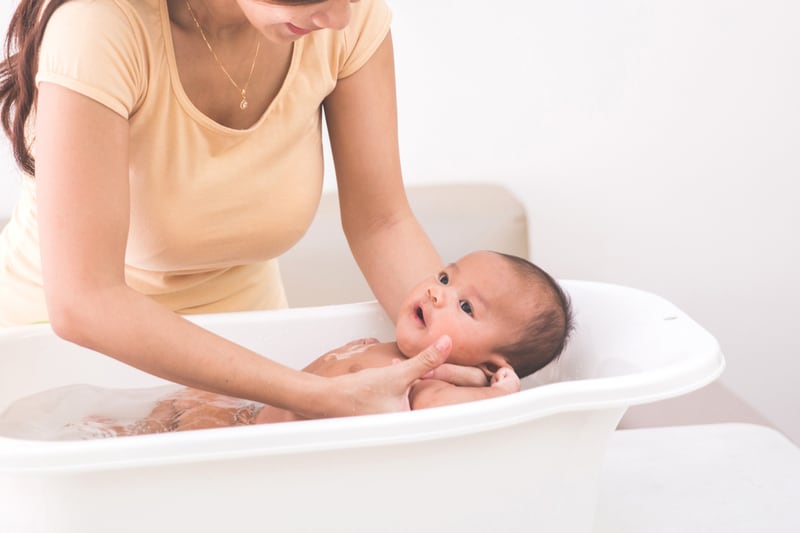
A good safety tip is to always have everything you need for bathing your baby within arm’s reach so you don’t have to leave the baby unattended or turn away from him, especially if you’re alone.
Many first time parents end up making this mistake, though it’s mostly due to a lack of experience. They’re often overwhelmed by all the responsibilities that come with the first baby and can’t possibly think about every scenario.
For those of you that are still unsure as to what the necessary items are, here’s a helpful little list of everything that you might need:
• Baby shampoo and body wash
• A cup to pour the water over your baby
• Baby-safe bath toys (optional, but very helpful in keeping the baby calm and entertained)
• A baby bathtub or a suction seat for the bathtub
• A soft, hooded towel
• A clean diaper
If you’re not alone and have someone to help you out, make sure that they do, especially if you end up forgetting something. Walking around with a soapy child is also dangerous as you don’t want the baby or you to slip and fall.
Your health is also important here and unnecessary risks put both you and the baby in danger, so avoid them whenever possible through preemptive thought.
4. Get baby some swimming lessons
If you’re concerned about larger bodies of water being potential causes of dry drowning, it’s best to get your little one learning how to swim early.
This will help minimize any risks of the kiddo inhaling water at any point and secondary drowning as well. But it’s surprising just how much knowing how to swim helps in general, even for very young babies.
Knowing simply how to doggy paddle can mean the difference between no problem and a major, potentially lethal one, especially when swallowing bathwater is a concern.
The Importance Of Using Non-Toxic Baby Shampoo
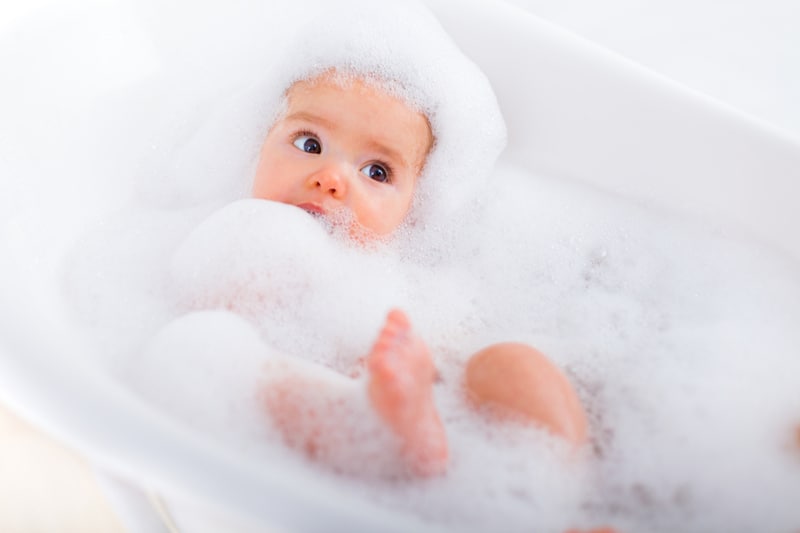
Making sure that all of the baby shampoos and bath products for your little one are completely non-toxic is super important.
RELATED: How To Make A Detox Bath For Kids To Boost The Immune System
This way even if your child ends up swallowing a lot of water, his internal organs are going to be relatively untouched barring the extra water which is easy enough to pump out, and you won’t have to worry about the chemicals inside the shampoo.
Make sure to go for a reputable manufacturer and carefully read the ingredients list. A few years ago there was a scandal with Johnson’s baby shampoo as their allegedly baby-safe shampoo contained formaldehyde which is a rather dangerous chemical.
Luckily, that grave error was amended before it could have any catastrophic consequences for kids and their shampoo is now, once again, safe for use.
This still doesn’t mean that all companies are producing completely non-toxic shampoos, so do your research and make sure to read the back of the bottle carefully for anything that may have been hidden in plain sight.
Our children’s safety is something that should come as a priority, especially in cases like these.
What Is Dry Drowning And Secondary Drowning?
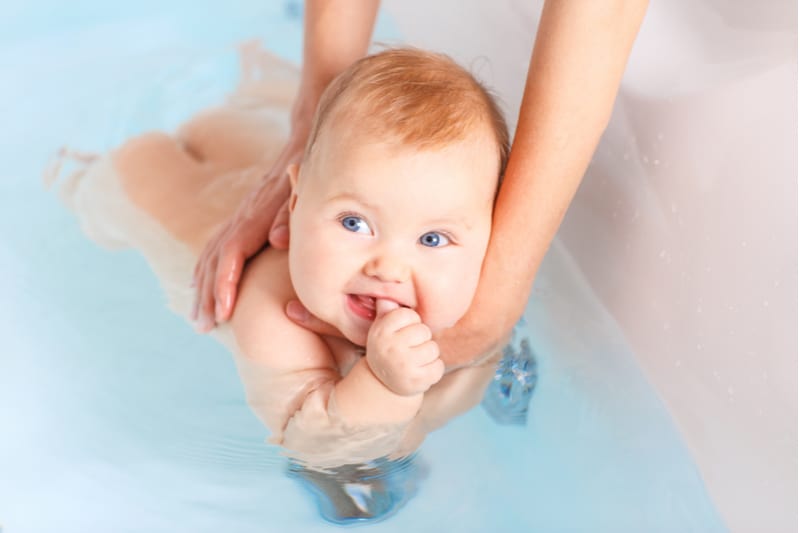
As mentioned at the start, dry drowning is what happens when a child ends up inhaling bath water. Instead of going down the esophagus, it ends up going down the windpipe, causing the muscle to spasm and emulate the feeling of drowning.
Secondary drowning, on the other hand, is what occurs if the inhaled bathwater ends up in the lungs and lingers there.
This water then further irritates the lungs and may cause pulmonary edema, a rather scary condition where the lungs start filling up with fluid which causes increased difficulty breathing.
However, neither of the two are that common unless the child is left unattended or is still extremely young to the point where he’s unable to stay aloft in a bath or keep from submersion by keeping his head above the water.
If you have a preschooler on your hands, the danger period has passed for you and your child. At this point, swallowing a small amount of water will make your child gag or regurgitate it, if even that.
However, in the cases of dry drowning, or its worse cousin, secondary drowning, one of the biggest concerns is it developing into either pneumonia or some form of bacterial infection in the lungs.
So how does this actually happen? Well, it often happens in rather intense situations that happen quickly and cause your baby to inhale the bathwater.
The 2 most common causes are the child slipping and falling into the bath which causes him to accidentally inhale instead of swallowing as the brain’s initial reaction is to try and take a deep breath before diving into water, but in this case it’ll trigger too late.
The other one is related to very young kids who might panic when you start pouring water over their heads. This could trigger a similar reaction that may end up causing them to inhale some of the water through their nose and have it go directly down the windpipe.
Should any of these instances occur, make sure to contact 911 or poison control first instead of mulling over the potential gravity of the situation.
The men and women working there are there to help you after all and to be on hand for anyone in need, so if you’re concerned about your child’s well-being, never hesitate to give them a call.
This is especially true if you’re uncertain about whether or not your child is going to be okay. It’s better to have a pediatrician look your child over and properly diagnose the severity of the condition and take the necessary steps to remedy the situation than doing nothing.
Follow all of the steps that are given to you since these people know best. After all, they aren’t pediatrics professionals for nothing.
What Are The Symptoms Of Dry Drowning And Secondary Drowning?
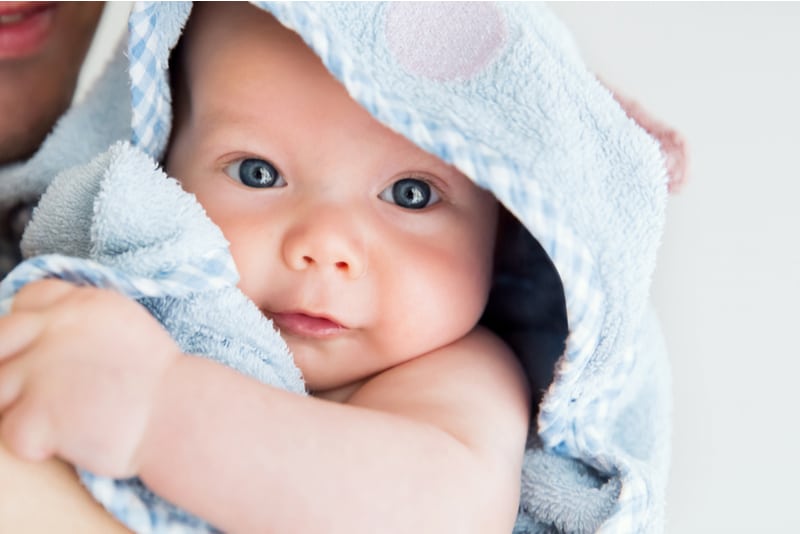
I know that not everyone can afford the mounting bills that even a simple ambulance ride can cost in the US for people who don’t have good medical insurance, which is why most parents tend to hesitate about giving them a call.
However, should you spot any of the symptoms of dry drowning, make sure to get emergency help so you don’t end up putting your child at unnecessary risk.
The most common ones for dry drowning are:
• Pain in the chest area
• Having problems forming words
• Coughing and wheezing
• Difficulty breathing
• The child feels extremely lethargic or low-energy after the drowning incident
• Mood swings or higher irritability
As far as the symptoms of secondary drowning go, the most common ones that you’ll encounter are:
• Coughing and wheezing fits
• Lethargic behavior
• Fatigue
• Vomiting
• Mood swings
• Light fever
• Skin turning blue
• Chest pain
• Shallow breathing
• Frequent choking or gagging
• Having a hard time speaking/words sounding like the child has a hoarse throat
• Headache
Should you spot any combination of these or see your child behaving strangely in any way during or after a dip in the water, it’s best to dial 911 to get him to the emergency room as soon as possible.
Is A Bathtub The Only Place Where This Can Happen?
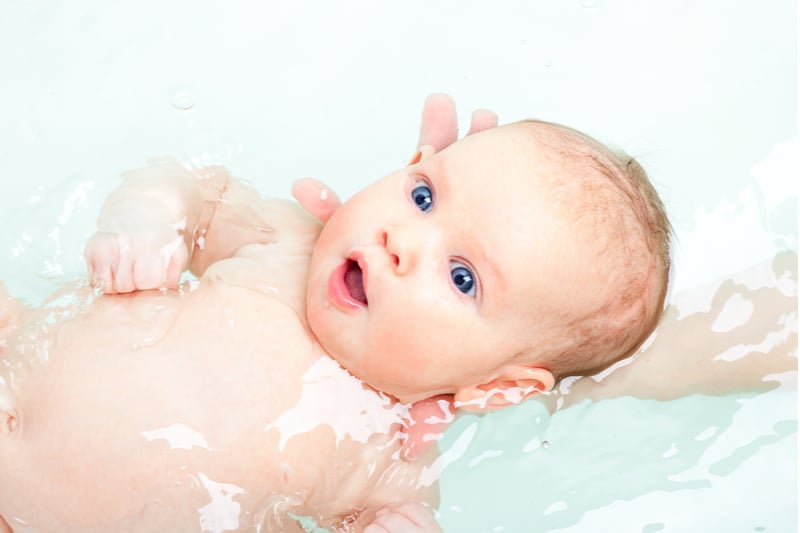
Unfortunately not. Any big body of water where actual drowning may be a concern is a potential candidate for dry and secondary drowning risks as well.
This includes pools, rivers, lakes as well as the ocean or the open sea and is not limited to young children alone as anyone is capable of inhaling water, especially people who don’t yet know how to swim.
In cases like these, especially when you’re teaching your kiddo how to swim, make sure you’re doing it in places with a lifeguard present so they can jump in and rescue your child in case of an emergency.
They’ll be able to perform the emergency maneuvers necessary to safeguard the child’s health since they were trained in proper water safety and providing first aid.
In Conclusion
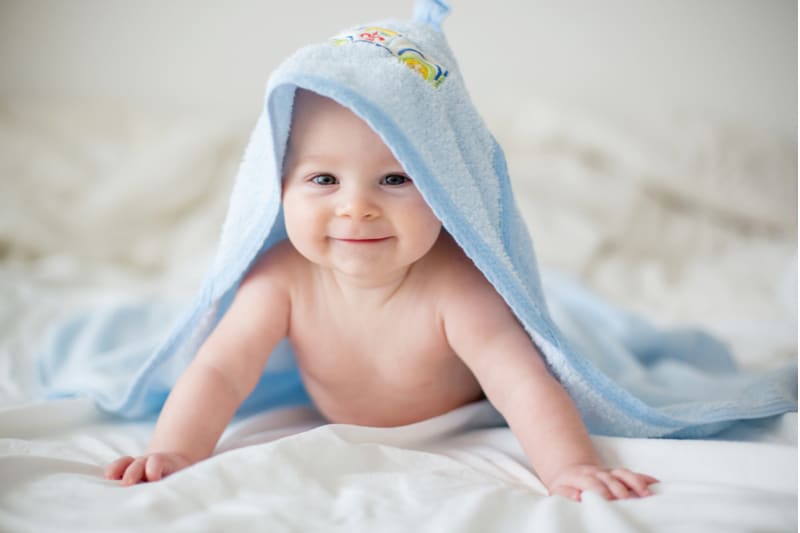
If your baby swallowed bath water, it’s not always a major problem, especially if you’re using non-toxic shampoos and following all other guidelines regarding safely bathing your baby.
It’s the inhalation of bath water that’s of a bigger concern, also known as dry and secondary drowning.
Even the smallest of symptoms shouldn’t be ignored as they can further develop into more concerning problems like various infections and pneumonia.
If you suspect that your child may be at risk of any of the problems mentioned above, make an immediate call to 911 so they can get your child to the emergency room quickly and have the doctor look him over. It’s always better to be safe than sorry.
Nothing can replace solid advice from your pediatrician or any other qualified healthcare professional.
They’re the people who can properly diagnose your child’s symptoms and potential issues and are best equipped for educating you on the proper prevention methods for your little one.
If you want to be super safe, make sure to get your baby into one of those community center swimming lessons so he too can learn how to fend for himself in case of an emergency.
Whatever the case may be, remember that secondary and dry drowning are rather rare, but are possible so it’s worth staying alert for it.
While it does mostly happen to young children, it can happen to older kids and even adults too, so don’t just watch out for your child, watch out for your health too.
I’m sure that you’ll be able to do what’s best for both you and your child, mamma, whatever the situation may be. Until next time.
READ NEXT: Showering Baby: Is It Safe Or Should You Wait?
References:
• Harsha Kumari Singh. (2016, February 24). “Cancer-Causing Chemical Found In Johnson & Johnson Baby Shampoo”. NDTV website.
Like this post? Please share or pin it for later. You can also stay in the loop and follow us on Facebook, Instagram or Pinterest.
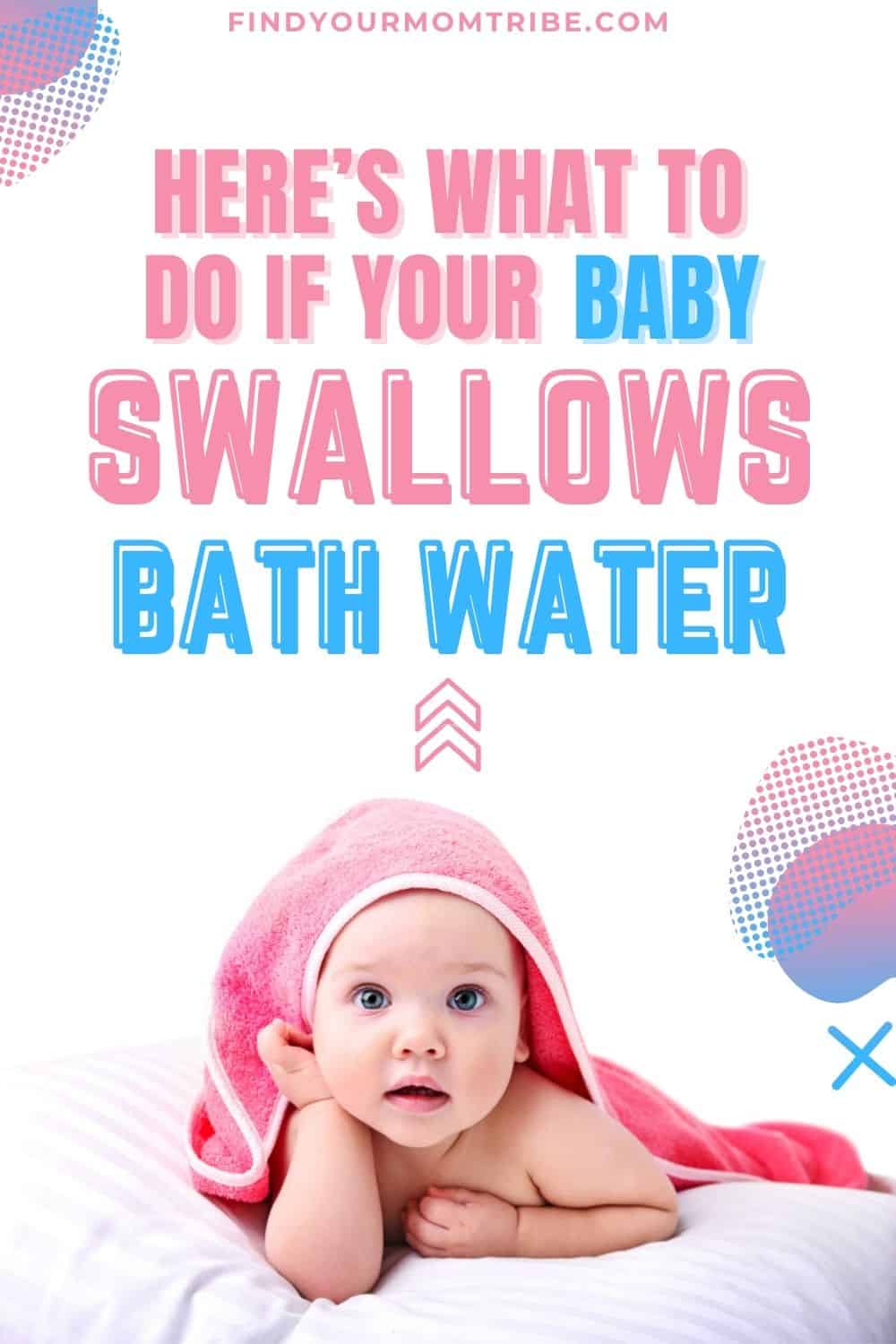
We love honesty! Find Your Mom Tribe is an Amazon Associate and we earn from qualifying purchases through affiliate links at no extra cost to you. Please see our full Amazon Affiliate disclosure for more information.


